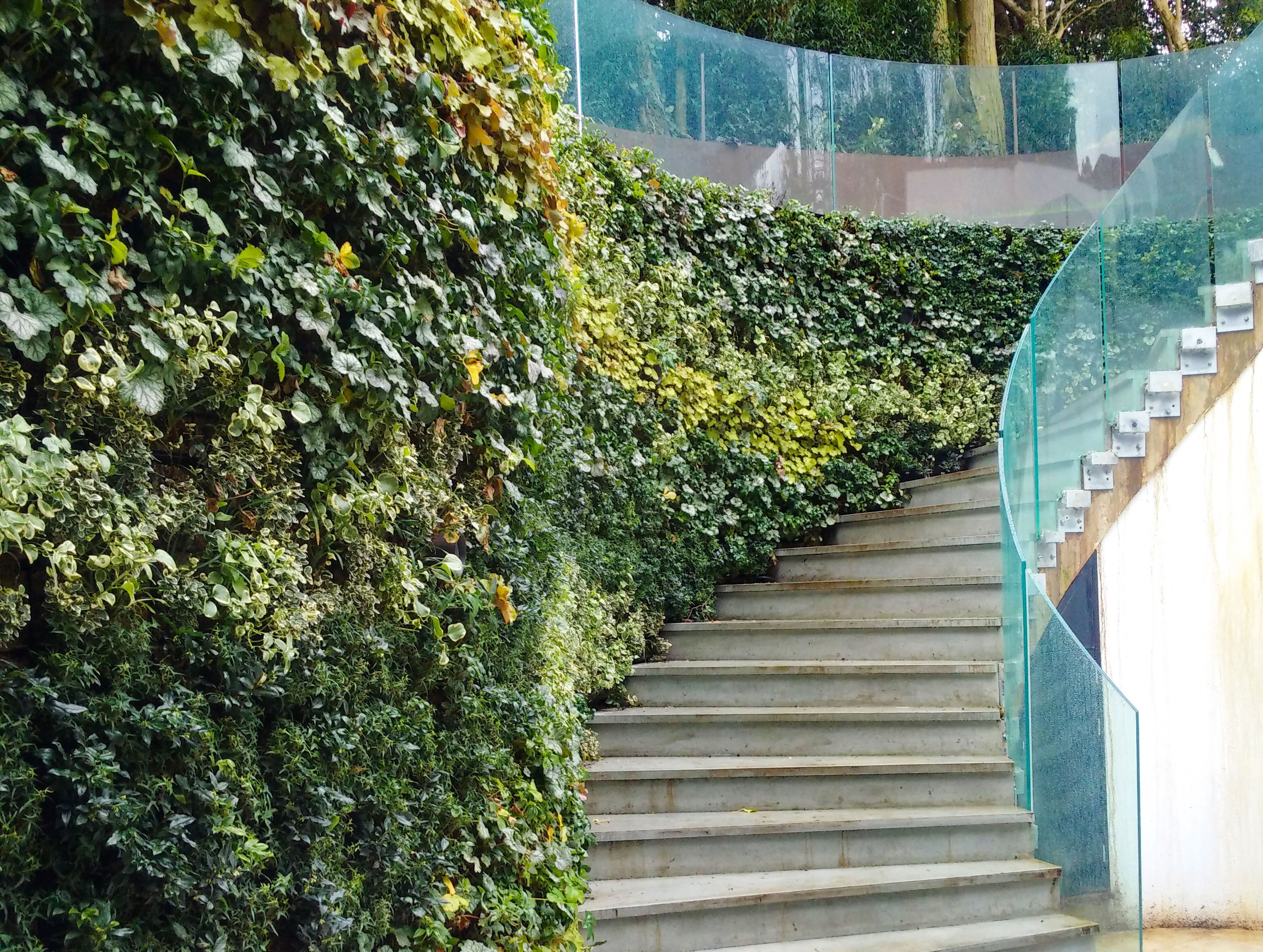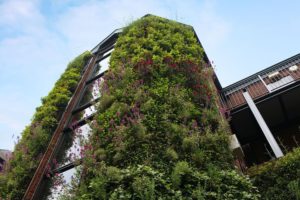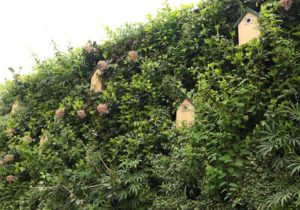
ANS Global, the world’s leading living wall specialist, reveals the benefits of living walls and green roofs, demonstrating how these living installations are aiding planning whilst leading the way to a greener, better future.
As construction continues to eat away what little remains of the natural landscape, the pressure for local authorities to place greater emphasis on sustainable solutions rapidly grows. With the revelation of shocking statistics, such as 4.2 million deaths worldwide every year as a result of exposure to outdoor air pollution[i], planners and local authorities must answer the expectations of the concerned public by demanding more green solutions from proposed designs.
With the likes of new planning tools springing up to ensure that infrastructure doesn’t come at a cost, the industry faces additional planning hoops to jump through. As a result, ethical installations such as living walls and green roofs have become the new go-to for forward-thinking architects. Having grown in popularity due to their ability to tackle pollution, these installations are a crucial step-forward in transforming construction for the better.
With the planting of vegetation at street level reducing concentrations of harmful particulate matter by a whopping 60%[ii], the addition of living design makes for an impactful example of green architecture that reaps reward way past planning. With this type of on-going benefit greatly valued by urban planners, initiatives such as London’s Urban Green Factor (UGF) includes living walls and green roofs as highly favoured additions to planning proposals.
As the population continues to grow, London’s natural environment and existing green spaces are at risk, and the Greater London Authority is taking action, by forcing the growth of green design. This initiative is set to influence other planning authorities, as UGF aims to transform urban construction into something that benefits the wellbeing of the community and the environment.
Able to aid in balancing the ratio of ‘urban grey’ to ‘living green’ as well as encouraging biodiversity, sought after green design features such as living walls and green roofs, offer a way of reducing the consequences of new construction on the surrounding environment – yet another key feature that can score big points with planners.
Steve McIntyre, Urban Environment Consultant at ANS Global, said:
“With an increase in regulations that ensure the addition of green construction, living walls and green roofs are an effective option for encouraging planners to look favourably on applications. From a one-off regenerative project to large-scale developments, with expert knowledge these living installations can be applied almost anywhere, turning vertical wasteland into a green design feature.
“Offering much more than just a few additional ticks to the planning checklist, these living installations have the ability to elevate a construction project into architecture that makes a difference, is kinder to the planet and its inhabitants – a project to be proud of.”
Not just useful during the planning process, clients can reap the rewards long after build completion. Offering an effective solution to softening the appearance of new builds, the external addition of living walls and green roofs only improves with age as pollinators and birds begin to thrive. Plus, with the ability to improve a build’s environmental performance, not only will a build’s carbon footprint look a little healthier but so will running costs.
Making long-term energy use greener by regulating temperature, these design features can keep a building warmer in the winter and cooler in the summer – a key feature for the ultimate energy efficient build. In addition to saving money, these living installations can also increase property value, making green planning regulations that bit more worthwhile in the long term and a wise investment.
Boasting ongoing rewards for the environment, public well-being and the owner of the building, these accessible living installations offer sustainable value, making green roofs and living walls an obvious addition to planning proposals.
Understanding the array of benefits provided by living installations, in 2008 the London Living Roofs and Walls Policy was designed to influence the policy frameworks developed by individual London boroughs. By 2017 the total area of green roofs in the Greater London Authority totalled an impressive 1,510,000m2, doubling the measurement from 2010[iii]. As similar green planning initiatives are set to rise from 2019, we can only expect these figures to continue to grow as well as the demand for living design.
With this increased adoption of green installations to new and existing construction projects, the future of architecture is set to be one of a greener existence, advanced forward-thinking, and most importantly, of benefit to everyone involved.
[i] World Health Organisation https://www.who.int/airpollution/en/
[ii] Effectiveness of Green Infrastructure for Improvement of Air Quality in Urban Street Canyons Thomas A. M. Pugh*, A. Robert MacKenzie, J. Duncan Whyatt, and C. Nicholas Hewitt
[iii] https://livingroofs.org/wp-content/uploads/2019/04/LONDON-LIVING-ROOFS-WALLS-REPORT-2019.pdf



